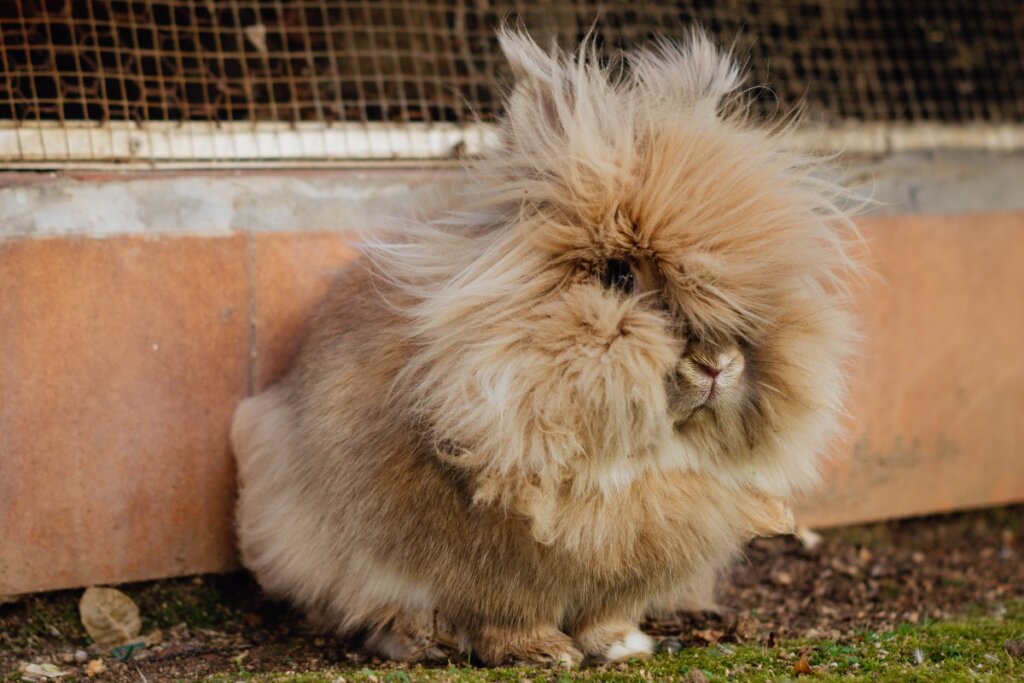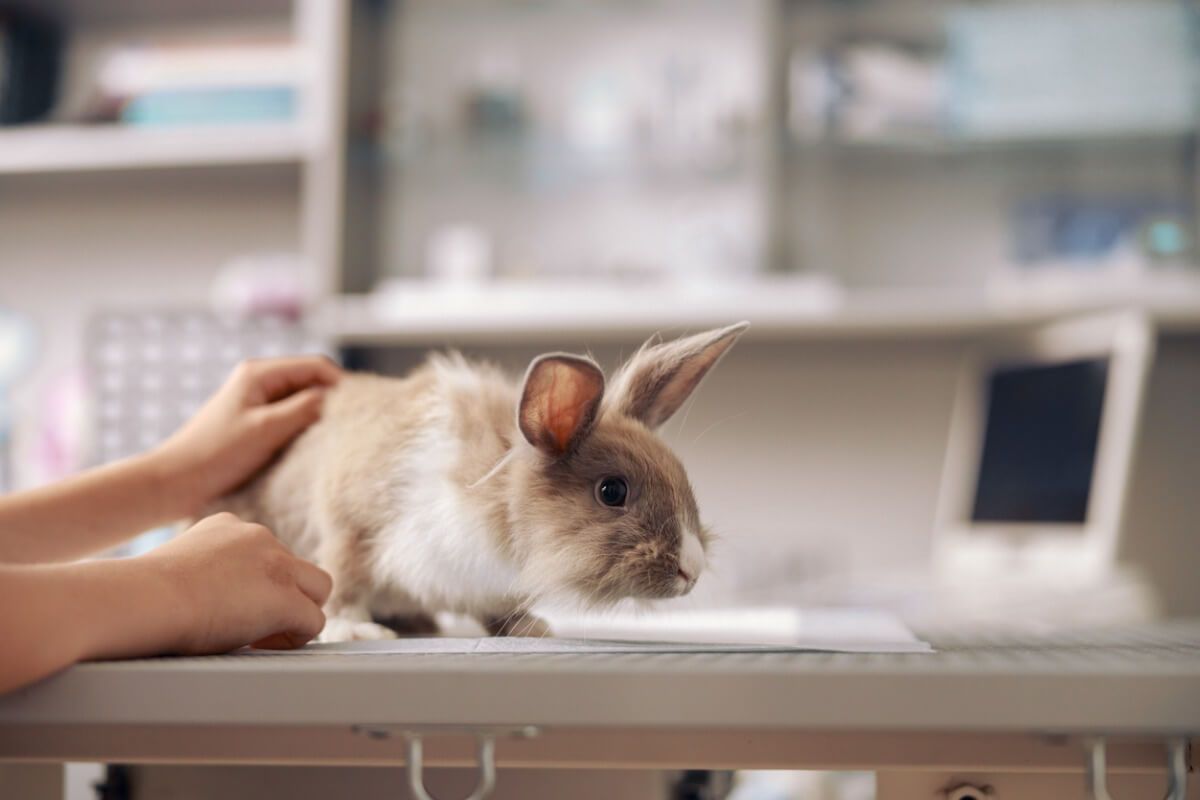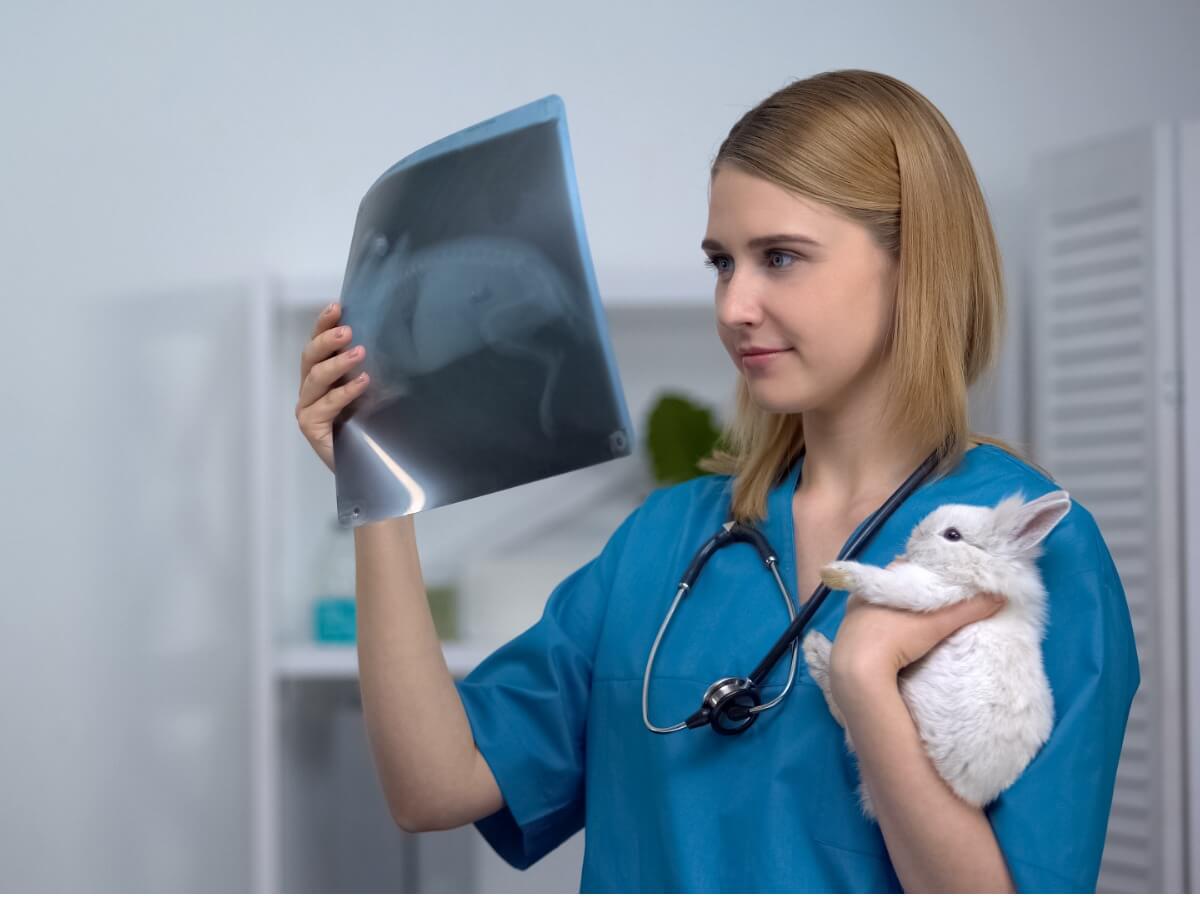Hairballs in a Rabbit's Stomach: What to Do?

Rabbits are very clean animals and the hygiene routine they carry out allows them to keep their coat clean. However, this also has its drawbacks, such as the formation of hairballs in a rabbit’s stomach after repeated grooming.
Just like cats, these animals spend a lot of time each day grooming themselves. For this reason, it’s quite common for these pets to swallow a lot of loose fur. Preventing this, or helping them eliminate these hairballs is essential for a rabbit’s health, and in this article, we’ll show you how to do it.
What are hairballs in a rabbit’s stomach?
Hairballs, also known as trichobezoars, are solid masses composed of hair that get lodged in any part of the digestive system of the animal. They’re produced by the rabbit itself, because in its grooming habit it involuntarily swallows loose hair from its body.
Hairballs in a rabbit’s stomach are a potentially serious problem. This is because they can accumulate in the intestinal tract and stomach, causing an obstruction. The problem is compounded if it’s also taken into account that rabbits are not capable of vomiting.
Cats have it somewhat easier when it comes to expelling hairballs, since they can vomit.
However, experts remind us that trichobezoars should not be confused with gastrointestinal stasis. Gastrointestinal stasis causes a slowdown of food through the digestive tract, but it isn’t caused by a physical obstruction such as hairballs. Its appearance is caused by a change in the animal’s gastrointestinal bacteria.
In many cases, most of the hair that rabbits swallow travels through the intestinal tract and is expelled in the feces. For this balance to be maintained, these animals must be eating a diet rich in hay and other foods that provide them with fiber. If not, hairballs will form in the rabbit’s stomach.
To prevent this from happening, the main thing is to be attentive to the symptoms. We’ll show you what they are in the following lines.

Symptoms of hairballs in rabbits
Some of the signs that may indicate that your rabbit has hairballs in its stomach are the following:
- Loses its appetite and stops eating
- Doesn’t defecate regularly, it can even stop for days.
- It has a swollen abdomen
- The droppings have attached hairs.
- It’s listless
- Refuses to move.
- Shows signs of abdominal pain.
If you notice any of these symptoms, you should go immediately to a veterinary center; choose one that specializes in exotic animals. Trichobezoars may not be the real cause, but any of these signs are indications that something isn’t quite right with the rabbit’s health.
How to prevent hairballs in rabbits
Hairballs in the rabbit’s stomach can be prevented by following certain tips. We’ll explain them below, so keep reading.
Food and water
If you want to avoid the formation of trichobezoars in rabbits, a correct diet is key. The diet of this animal should be rich in fiber and low in carbohydrates.
Hay will be the main basis of their food, but you also have to include fresh vegetables and fruits in their daily life. Within the group of fruits, it should be noted that, in these cases, pineapple and papaya are very beneficial, as long as they’re given in small pieces once or twice a week.
In addition to this, keeping the rabbit well hydrated is essential. All this benefits their intestinal tract and facilitates the movement and expulsion of hairballs, as they’ll be more humid and eject more easily.
Regular brushing
Brushing your pet’s hair on a regular basis will help remove dead hair that won’t be ingested. The brushes to be used will depend on the type of coat of the rabbit, although metallic thin card-type brushes are usually the most effective when it comes to removing that loose fur.
During shedding periods, brushing should be carried out more frequently than usual. You have to be much more careful at this stage, since the loss of hair will be more abundant and there’ll be more chances that the animal will swallow hair when grooming itself.
Exercise and games
Physical activity favors gastrointestinal motility, as well as the digestion of the animal. Taking the rabbit out of the cage every day for several hours and allowing it to run in a wide space will help it in this regard, as well as its overall health. Similarly, providing it with appropriate toys will enrich its daily activity.
A quiet and healthy environment
Stress in rabbits can lead to pet hair loss. Therefore, providing the animal with a calm and healthy environment will help the rabbit to be emotionally balanced.
The animal should be assigned a quiet resting place in the house, away from noise and possible predators (other pets). In addition, the room temperature must be adequate and their cage must be kept clean at all times.
What to do about hairballs in the rabbit’s stomach
The prevention methods mentioned are also helpful if you sense or detect that the rabbit has hairballs in its stomach. Even so, it’s essential to consult a veterinarian, as if a severe obstruction occurs, the animal will likely have to undergo surgery.
In addition to all that we’ve said, there’s a very effective food supplement when it comes to treating trichobezoars. It’s malt for rabbits, and to finish this article we’ll tell you all about it.
What is malt for rabbits?
Rabbit malt is a thick, plant-based paste that you can buy at pet stores. It’s sold in tube format, as if it were a toothpaste, and that facilitates its dosage.
Malt is often used in adult rabbits. To provide it, the ideal thing is to consult a veterinarian or follow the manufacturer’s recommendations. Even so, the usual thing is to give it once or twice a week to the pet in normal times and increase this to 3 or 4 times in the molting phases.
Keep in mind that rabbits don’t usually like its flavor much. Sprinkling a little malt on top of its food isn’t a good idea, as the animal may reject the food. What experts usually advise is to spread a little malt on the rabbit’s foot. When it feels it there, it’ll want to get rid of it and will have no choice but to lick it!

Rabbits that are affected by a large number of trichobezoars or any other element that clogs their intestinal tract will see their lives in serious danger if measures aren’t taken in time. Putting its health in the hands of a professional is an essential step in order to prevent this from happening, so don’t delay from visiting the vet if you detect any of the aforementioned signs in your pet.
All cited sources were thoroughly reviewed by our team to ensure their quality, reliability, currency, and validity. The bibliography of this article was considered reliable and of academic or scientific accuracy.
- Hairballs in rabbits. Recogido el 9 de septiembre en https://www.brookvets.co.uk/hairballs-in-rabbits/#:~:text=True%20hairballs%20are%20very%20rare,their%20stomach%20and%20digestive%20system.&text=True%20hairballs%20are%20called%20trichobezoars,of%20a%20low%20fibre%20diet.
- Guía básica del cuidado del conejo. Recogido el 9 de septiembre en https://auxclivet.com/wp-content/uploads/2021/06/Guia-basica-del-cuidado-del-conejo-1.pdf
- How to Prevent Rabbits from Getting Hairballs. Recogido el 9 de septiembre en https://www.thesprucepets.com/how-to-prevent-rabbits-from-getting-hairballs-1237206
- Recomendaciones al adoptante. Recogido el 9 de septiembre http://www.colvema.org/pdf/CONEJOSOK.pdf
- Brotóns, N. J., & Blasco, M. (2004). Hipomotilidad gastrointestinal en conejos: 7 casos clínicos. Clínica veterinaria de pequeños animales, 24(4), 0211-219.
